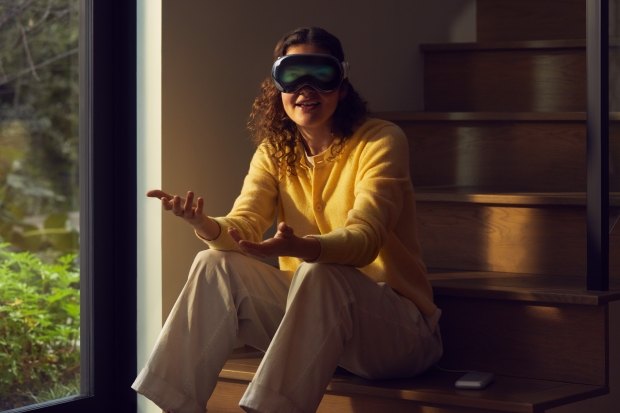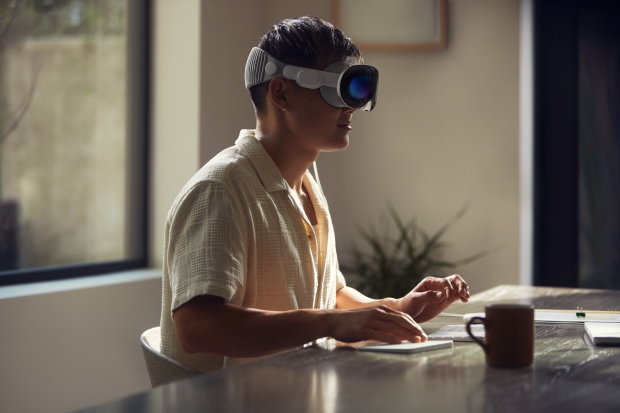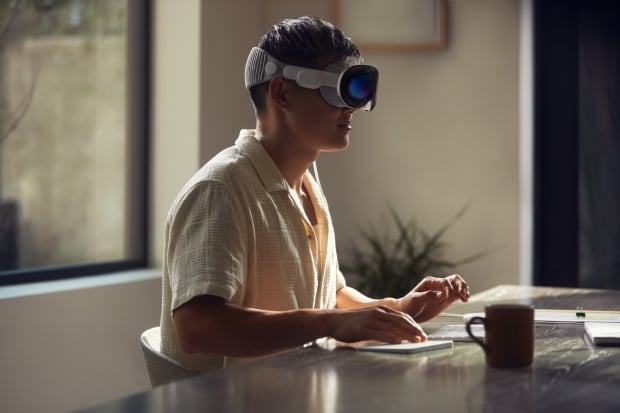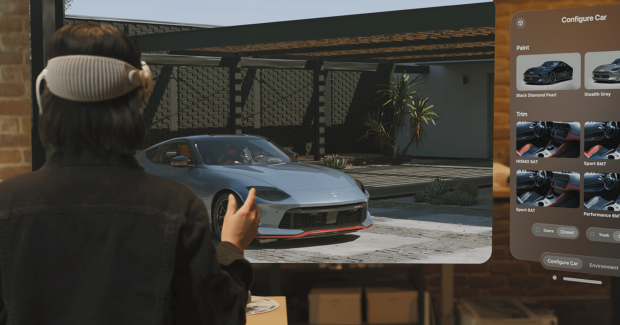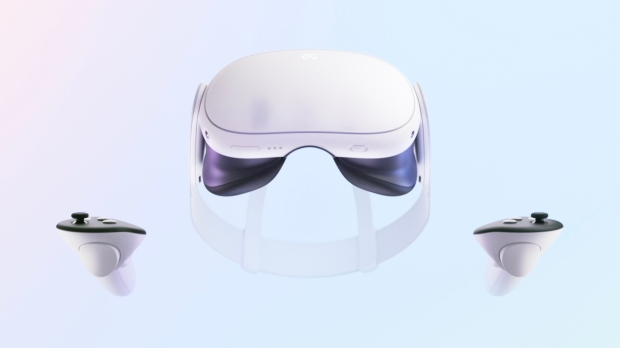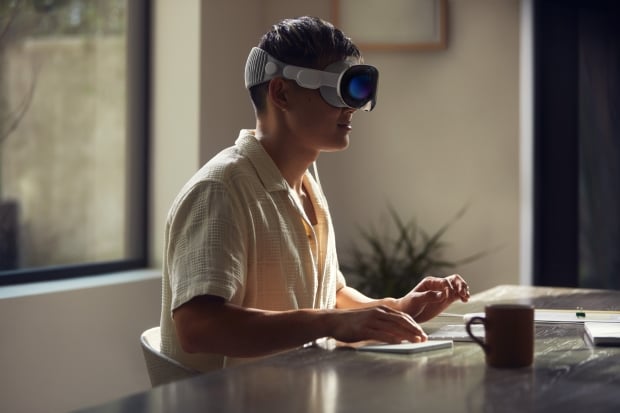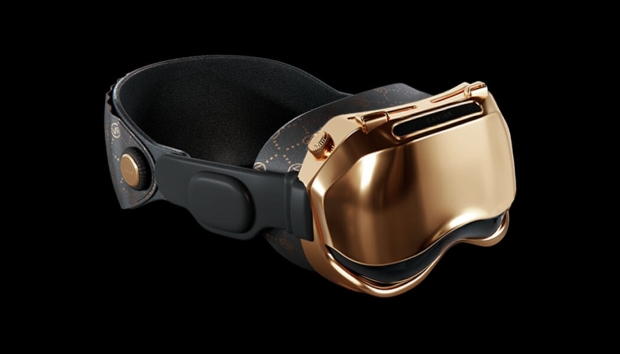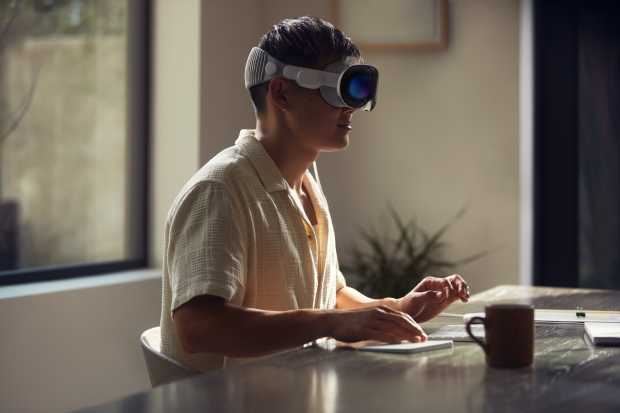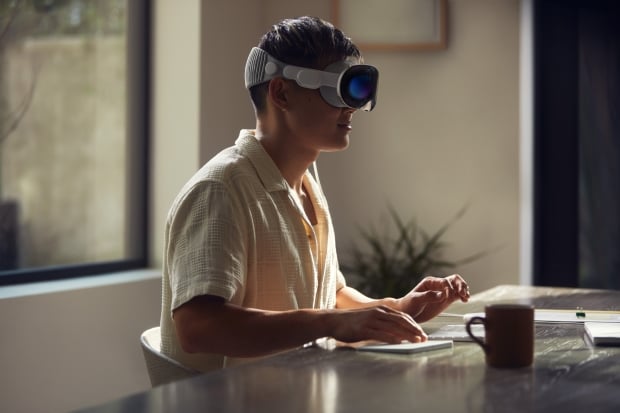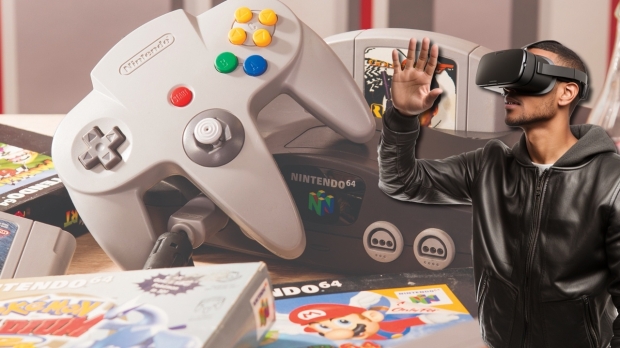Virtual & Augmented Reality and 3D News - Page 4
The Apple Vision Pro will debut in China before year's end, Tim Cook confirms
The Apple Vision Pro is currently only available to buy in the United States but the Apple website says that it intends to launch the headset in new countries before the end of the year. So far the company hasn't said which countries, but we now know that China will definitely be among them.
That's the news after Apple CEO Tim Cook confirmed as much to China's state media during a recent visit to the country. Cook was in China to celebrate the opening of a new Apple Store in Shanghai as well as to speak with local officials and supply chain partners. According to a Reuters report, Cook was asked about the Apple Vision Pro and when it would arrive in the country. The report says that the Apple Vision Pro will go on sale in China this year.
There is currently no firm information on when that will happen but previous reports had suggested that Apple could launch the Apple Vision Pro in new countries before the June WWDC event. other countries are also expected to be part of the 2024 lineup but as yet Apple has not confirmed which ones will be included.
Apple Vision Pro support for a future Apple Pencil is reportedly being tested already
The Apple Vision Pro has been on sale for a couple of months at this point but a new report claims that there could already be a big change in the works, and it might arrive sooner rather than later. If the report is true, Apple is already testing a way to use the Apple Pencil with the Apple Vision Pro, but quite how that will work is yet to be confirmed.
The report comes via unnamed sources speaking with MacRumors and it's said that Apple has already tested a new Apple Pencil with visionOS support. It's thought that the new support would allow people to use an Apple Pencil with artistic and creative apps like Freeform and Pixelmator software, it's thought.
In terms of how that will work, it's been suggested that users will be able to draw or write using an Apple Pencil on a desk or similarly flat surface and then have the strokes appear in an app running on the Apple Vision Pro. The move could make it easier to write notes and whatnot, much like what can be done on an iPad, but while using an Apple Vision Pro instead.
New job listings hint at future Apple Vision Pro launch countries
The Apple Vision Pro is Apple's big bet on the future of spatial computing, but right now it's only available in one country. The Apple Vision Pro went on sale in the United States in February with no word on when a global launch would take place other than it happening later this year. Now, we might have a better understanding of which countries the headset will launch in.
Apple previously began advertising for a new role in the UK for a so-called Briefing Experience Specialist. The role has now also appeared in three additional countries; Japan, Australia, and China. The move has led some to believe that those countries, likely along with the UK, will be the next to receive an Apple Vision Pro launch.
The job Apple has now started to advertise appears to be one that will see the successful application promote the Apple Vision Pro to businesses and other professional settings. They'll inspire customer investment in the visionOS platform as well the Apple Vision Pro specifically, the job description says. In some ways, the role appears to be some sort of evangelist, but there is also a business component here as well.
Continue reading: New job listings hint at future Apple Vision Pro launch countries (full post)
NVIDIA announces its Omniverse Cloud now streams to the Apple Vision Pro headset
NVIDIA announced its new Blackwell B200 AI GPUs at its GPU Technology Conference (GTC) event this week, with news that the company is bringing OpenUSD-based Omniverse enterprise digital twins to Apple's new Vision Pro headset.
NVIDIA announced a new software framework built on Omniverse Cloud APIs, which allows developers to send their Universe Scene Description (OpenUSD) industrial scenes from their content creation applications, to the NVIDIA Graphics Delivery Network (GDN). NVIDIA's global network of graphics-ready data centers are capable of streaming advanced 3D experiences to the Apple Vision Pro headset.
The company showed a demo off at GTC 2024 that included an interactive, physically accurate digital twin of a car streamed at full quality to Apple Vision Pro and its high-resolution displays. The demo featured a designer wearing the Apple Vision Pro, using a car configurator application called Katana, developed by CGI studio, powered by NVIDIA's own Omniverse platform.
Meta Quest 3 Lite is a cut-back, more affordable VR headset on track for a 2024 release
By all accounts, the Meta Quest 3 is an excellent VR headset. Adding RGB video pass-through for an immersive mixed-reality experience adds a new layer to the virtual experience. The only real problem is that the Meta Quest 2, with its recent official price cut, looks to be the more popular option for those picking up a Quest.
$249 USD for the 128GB Meta Quest 2 compared to $499 USD for the 128GB Meta Quest 3 represents a 66% increase for the newer model, so Meta is looking to launch the Meta Quest 3 Lite in 2024. The new 'Lite' model is expected to retain all the improvements made to the displays and additional processing power of the Meta Quest 3.
The big difference and reason for lowering the price from the current $499 USD is the removal of the two RGB cameras - one of Quest 3's biggest draw cards.
The Apple Vision Pro's App Store just got a web version so anyone can browse it
The Apple Vision Pro has now been on sale for a few weeks and the headset is reportedly expected to debut in additional countries beyond the United States within the next few weeks. This being such a new product for Apple the headset continues to undergo a number of changes with the latest being a new way for people to browse its App Store.
Previously, the only way to browse Apple Vision Pro apps and the App Store's various stories and promotions was to buy an Apple Vision Pro, something that isn't always viable for a variety of reasons. Now that's changed after Apple released a web-based version of the visionOS App Store for people to peruse at their leisure and on any device of their choosing. 9to5Mac was the first to spot the addition of a web-based App Store.
Visiting the visionOS App Store via a web browser gives you quick access to everything that you would likely need including a rundown of all of the new apps as well as the ability to go through a collection of curated apps as well as categories. Each app page includes screenshots and all of the details that you would expect to find, too.
An 18-karat gold Apple Vision Pro? If you have to ask how much, you probably can't afford it
The Apple Vision Pro definitely isn't an impulse purchase for most people thanks to its $3,499 starting price. But that price could well turn out to be cheap when compared with the price that will likely be charged for a special 18-karat special edition version that is already being offered by Caviar.
Caviar is of course the Russian outfit that has built itself a reputation for launching custom phones and other devices the likes of which few can realistically afford. The company takes high-end iPhones and covers them in gold and leather as a matter of course, but things have been taken to a whole new level with this special Apple Vision Pro.
This Apple Vision Pro is what Caviar is calling a Rolls-Royce experience thanks in part to a new headband that is made from the legendary Connolly leather, the same outfit that supplies the British Royal Court and yes, Rolls-Royce. That leather is apparently soft yet durable and is considered by some to be one of the finest that money can buy. And now you can get it attached to Apple's spatial computer.
The Apple Vision Pro is little more than an expensive devkit, one former Oculus chief claims
The Apple Vision Pro has been on sale for a few weeks now which means that it isn't quite the huge story that it was not that long ago. But it's still a big product for Apple and the mixed reality headset market as a whole and now one person who knows a thing or two about that market has weighed in on Apple's so-called spatial computer.
Hugo Barra is the former VP of Android at Google but most recently he was the head of Meta's Oculus headset brand. Now, he's published a post on his blog that looks at Apple's headset and where it currently fits in a market that has so far been mostly Meta's for the taking.
Notably, Barra has once again ignited the complaint that the Apple Vision Pro is nothing more than a devkit, or a device that Apple needed to make and sell in order to give developers something to work with while they fill the visionOS App Store with apps. Barra backs that claim up, saying that the heavy weight and other factors are a reason that the headset is a "high-quality devkit" that is designed to capture the attention of everyone. It's certainly done that, with YouTube and other platforms full of influencers and reviewers and legitimate owners sharing clips of themselves using the headset in various different settings.
The Apple Vision Pro could launch in these NINE countries soon
The Apple Vision Pro has now been on sale for a few weeks having finally been released to the public on June 2. But the mixed reality headset, or in Apple's parlance the spatial computer, is only available to those in the United States right now. That's expected to change sooner or later, and a new report claims that it might know which countries will be next up on the release calendar.
According to that report, there are nine new countries that could potentially see an Apple Vision Pro release next. That's based on code that describes the addition of new languages to the Apple Vision Pro's visionOS software keyboard. Currently, only the English (US) and Emoji keyboards are offered in visionOS 1.1, but new ones are thought be be on the way according to code discovered by MacRumors.
According to the report, the following languages will all be added:
Continue reading: The Apple Vision Pro could launch in these NINE countries soon (full post)
Portal 64 dev's latest project? Nintendo 64 powered VR connected to an Oculus Rift headset
N64 expert and programmer James Lambert is back doing the impossible. The developer who successfully ported Valve's iconic first-person puzzle game Portal and got it running natively on Nintendo 64 hardware is shifting to modern VR on the N64. Virtual Reality was a big deal in the 1990s. However, products like Sega VR for the arcades were the VR Stone Age compared to where we are today.
The Nintendo 64 never got a VR peripheral, nor was one ever in development (Nintendo's Virtua Boy device is a different story), but in bringing "modern-day" VR to the system, James Lambert's project involves getting the Oculus DK1 (the development kit precursor to the Oculus Rift) to communicate with the N64 a custom USB adapter.
The reason for using the Oculus DK1 is its simple tracking, fewer sensors, and access to the source code, making it easier to port over to the Nintendo 64. From there, the HDMI port on his modded N64 sends the video signal back to the Oculus DK1, creating a nice little VR loop. Simple.


